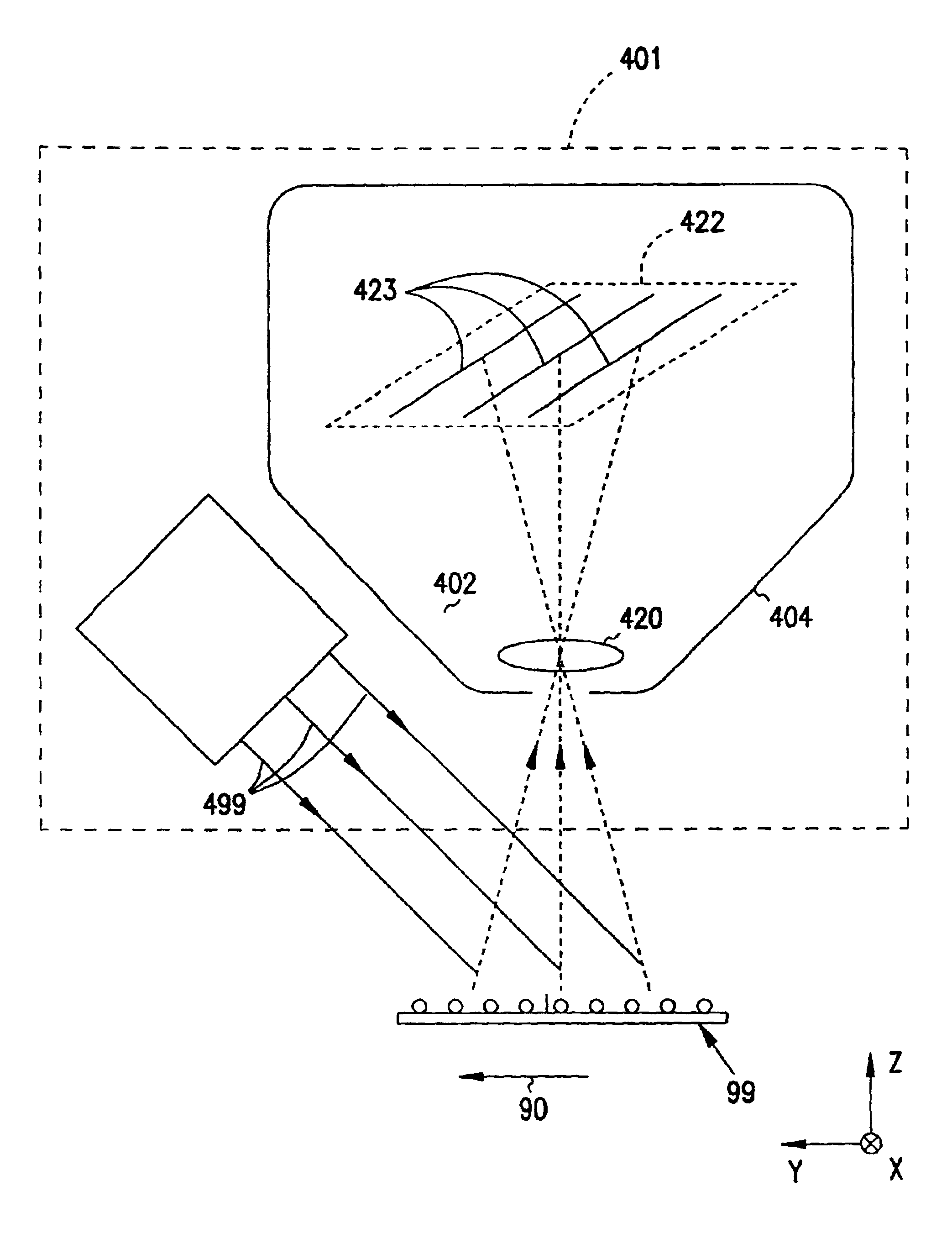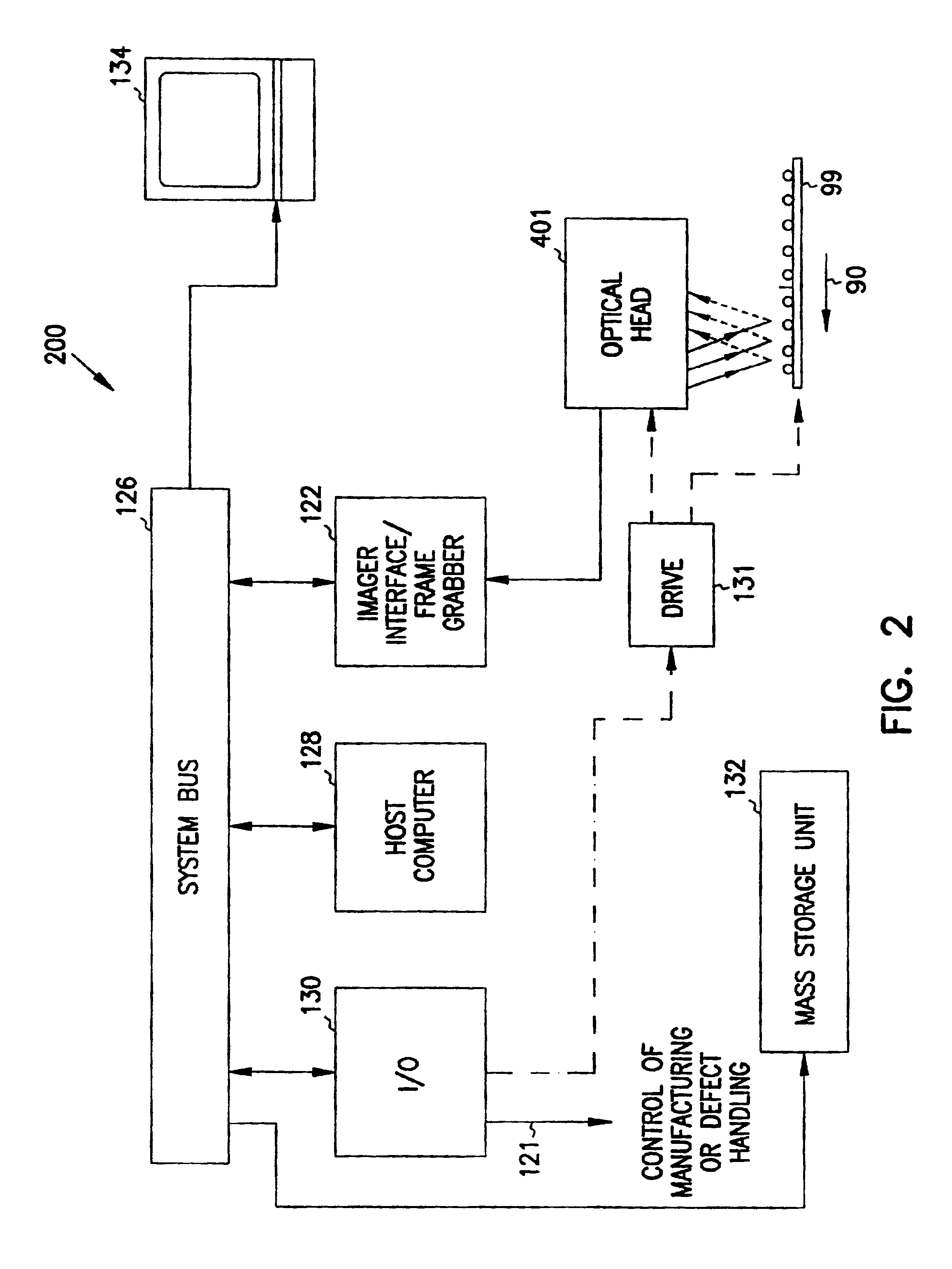Imaging for a machine-vision system
a machine-vision system and image processing technology, applied in the field of machine-vision, can solve the problems of difficult correlation of signals generated by the receiver, variability of the intensity of light received at the light receiver, and many problems of current vision inspection systems, so as to reduce the variability of light intensity received, ease the task of correlating data, and reduce the effect of variability
- Summary
- Abstract
- Description
- Claims
- Application Information
AI Technical Summary
Benefits of technology
Problems solved by technology
Method used
Image
Examples
Embodiment Construction
[0061]In the following detailed description of the preferred embodiments, reference is made to the accompanying drawings which form a part hereof, and in which are shown by way of illustration specific embodiments in which the invention may be practiced. It is to be understood that other embodiments may be utilized and structural changes may be made without departing from the scope of the present invention.
[0062]Machine-vision and optical-feature-recognition techniques can be used to distinguish parts that deviate from a predetermined intended aspect of an ideal device. In this description, a “device” is meant to be any device of manufacture or object, for example an integrated circuit package, electronic part, semiconductor, molded plastic part, aluminum wheel, gemstone or even an egg or strawberry, which can be inspected. Typically, according to the present invention, a manufacturing operation will use two-dimensional and three dimensional information acquired from inspection of t...
PUM
 Login to View More
Login to View More Abstract
Description
Claims
Application Information
 Login to View More
Login to View More - R&D
- Intellectual Property
- Life Sciences
- Materials
- Tech Scout
- Unparalleled Data Quality
- Higher Quality Content
- 60% Fewer Hallucinations
Browse by: Latest US Patents, China's latest patents, Technical Efficacy Thesaurus, Application Domain, Technology Topic, Popular Technical Reports.
© 2025 PatSnap. All rights reserved.Legal|Privacy policy|Modern Slavery Act Transparency Statement|Sitemap|About US| Contact US: help@patsnap.com



